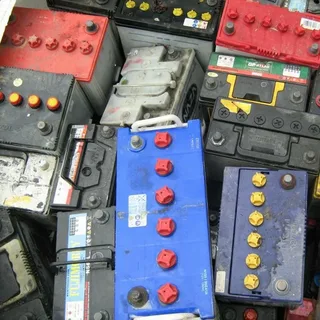Get EPR for Lithium-ion Battery Importer & Manufacturer with end-to-end assistance from Enviroxperts.
Package Inclusions :-
Overview of EPR for Lithium-ion Battery Importer & Manufacturer
The Ministry of Environment, Forest and Climate Change (MOEFCC), by informing the Battery Squander The board Rules, 2022, brought many required changes connected with the deal, import, and reusing of lithium-particle batteries. The new principles mean to control end-of-life battery the executives by characterizing the jobs of partners engaged with lithium-particle battery producing, import, restoring and reusing. (Broadened Maker Obligation) EPR for Lithium-ion battery importers & manufacturers additionally been presented for makers through the standards.
Moreover, according to these standards, reusing waste lithium-particle batteries implies reusing battery parts like lithium, nickel, cobalt, plastics, elastic, glass, and so on, subsequent to removing from old batteries. The makers can meet their EPR commitment through the lengthy maker obligation declaration made accessible by the recycler or renovated after they reuse or repair the ideal amounts of waste batteries. The principles likewise give assortment focuses for the accompanying classifications of batteries that might involve lithium-particle as a part. For acquiring the EPR for Lithium-ion Battery Importer & Manufacturer, the Extended Producer Responsibility plan has to be submitted according to Form 1 (C) of the rules.
Categories of Batteries Identified under EPR Regime
Makers should meet assortment, reusing, as well as repair focuses as in Timetable II of the principles. This timetable sets out a year-wise assortment focus on that should be renovated or reused for a 10, 6 or 5-year cycle contingent on the battery classification. These classes incorporate –
Licences and Authorisation Required by Producer of Li-on Battery
The following licences will be required to obtain EPR for Lithium-ion Battery Importer & Manufacturer –
Business Registration:Whether the maker produces the lithium-particle battery or imports it, business enrollment is expected to give the business a lawful personality.
Consent NOC:The maker that participates in the assembling of Lithium-particle batteries should get a contamination control testament, otherwise called Assent NOC, from the concerned State Pollution Control Board (SPCB) or Pollution Control Committees (PCC). The SPCB award these NOC at two stages, i.e. Consent to Establish (CTE)and Agree to Work.
Factory Licence:The lithium-ion battery manufacturer should get a production licence per the Factories Act, 1948.The primary targets of this act are to direct the functioning circumstances in production lines, to manage wellbeing, security government assistance, and yearly leave and sanction a unique arrangement in regard of youthful people, ladies and kids who work in assembling foundations.
EPR Registration for Producers:The makers and merchants of Li-on batteries need to occasionally enroll themselves with the CPCB through their unified internet based entrance and give the EPR Plan. The arrangement should show how they plan to satisfy their EPR. The key archives expected to get EPR for Lithium-ion Battery Importer & Manufacturer include the following:
Additional Licences and permits
How to obtain EPR Registration for Lithium-Ion Battery
| Registration with CPCB | Submission of EPR Plan | Issue of registration |
| The maker and shipper should finish up the enrollment at the incorporated internet based entry and provide the required documents to the CPCB. Getting this enrollment is crucial for EPR for Lithium-ion Battery Shipper and Maker. The CPCB will be the nodal expert in such manner. | Candidates should submit the EPR Plan according to Form 1 (C) of the rules. The arrangement should be according to the recommended design and incorporate subtleties of the battery amount, weight, dry weight, and subtleties of the organization of recyclers and refurbishers. | In the wake of finishing up the structure on the concentrated entrance, the maker will be permitted to carry on the matter of assembling, selling and bringing in lithium-particle batteries. The CPCB will be the enlistment giving power. The enrollment, in any case, will be dependent upon effective examination of the records and legalities included. |
EPR Obligations of Producers and Importers under Battery Waste Management Rules, 2022
A Maker can likewise meet its EPR commitment under a class by buying surplus EPR testaments from makers of a similar battery class.
How will Enviroxperts Assist You?
| Comprehensive help with your EPR commitments | Expert Advice all along the way | Swift Assistance and customer support |
| Enviroxperts has a different group of specialists to work with your EPR Enrollment and post consistence for EPR for lithium-ion Battery Shippers and Makers. We have an accomplished group of ecological specialists that can help you EPR Plan and other authorizing and license necessities for your Lithium-particle battery business. | With over decade of involvement, Enviroxperts guarantees a fast and bother free insight towards all legalities in bringing in and manufacturing Lithium-ion. Our involvement in authorisation and permitting connected with Squander The board Business. | We have a far reaching organization of specialists helping organizations. We are known for pragmatic client support and consistently attempt to guarantee that correspondence with our clients is useful and consistent. |




